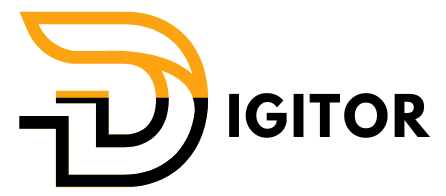Secure GoDaddy Domain with Cloudflare
In today’s digital world, website security and speed are essential. If your domain is registered with GoDaddy, one of the most effective ways to enhance both performance and protection is to secure your GoDaddy domain with Cloudflare. This step-by-step guide will show you how to integrate your domain with Cloudflare to gain access to a free SSL certificate, DDoS protection, performance optimization, and more.
Why Secure Your GoDaddy Domain with Cloudflare?
Cloudflare is a powerful web performance and security platform that acts as a proxy between your website and the rest of the internet. By integrating Cloudflare with your GoDaddy domain, you benefit from:
-
Free SSL Certificate
-
DDoS Attack Mitigation
-
Global CDN (Content Delivery Network)
-
Improved Load Times and Website Performance
-
Spam and Bot Protection
Securing your GoDaddy domain with Cloudflare is simple, cost-effective, and essential for any modern website.
Step-by-Step Guide: Secure GoDaddy Domain with Cloudflare
Follow these steps to complete your GoDaddy and Cloudflare integration securely.
Step 1 – Create a Cloudflare Account
Visit Cloudflare.com and create a free account. Once registered, click “Add a Site”, then enter your GoDaddy domain name (e.g., example.com) and click Next.

Step 2 – Select a Cloudflare Plan
Choose the Free Plan, which includes essential security features like SSL, DDoS protection, and a global CDN. You can upgrade later for more advanced settings.
Step 3 – Review and Confirm DNS Records
Cloudflare will scan your domain’s existing DNS records.
-
Ensure all critical DNS entries (A, MX, TXT, CNAME) are accurate.
-
If you use third-party services (like Google Workspace), double-check those records.
-
Click Continue once everything looks good.
Step 4 – Update GoDaddy Nameservers
To secure your GoDaddy domain with Cloudflare, you’ll need to point your domain to Cloudflare’s nameservers.
How to Update Nameservers on GoDaddy:
-
Log in to GoDaddy.
-
Go to My Products > Domains > DNS.
-
Under Nameservers, select Change.
-
Choose Custom, then enter the two nameservers provided by Cloudflare.
-
Click Save.
Note: Nameserver changes can take up to 24 hours to propagate worldwide.
Configure Security Features on Cloudflare
Once your GoDaddy domain is connected, enable Cloudflare’s core security settings.
Enable SSL
Go to the SSL/TLS Tab in Cloudflare:
-
Select Full or Full (Strict) (recommended if your server has its own SSL).
-
Turn on Always Use HTTPS and Automatic HTTPS Rewrites.
-
These settings ensure secure encryption between your visitors and your site.
Set Up Firewall Rules
Protect your domain from bots, hackers, and brute-force attacks.
-
Go to the Firewall tab.
-
Create rules to block known bots or suspicious IPs.
-
Use the Security Level setting to adjust threat sensitivity.
For more info on firewall settings, visit Cloudflare Security Docs.
Enable Bot Fight Mode
In the Security section, turn on Bot Fight Mode to block or challenge malicious bots trying to access your site.
Optimize Performance with Cloudflare CDN
Cloudflare’s CDN automatically caches your website content across multiple global servers. This improves speed and reduces latency.
-
Go to Speed > Optimization.
-
Enable Auto Minify for CSS, JavaScript, and HTML.
-
Turn on Brotli compression for better page load times.
To analyze performance improvements, test your site using GTmetrix.
Troubleshooting & Final Checks
-
Check DNS propagation using What’s My DNS.
-
Ensure your site shows a secure padlock icon (🔒) in the browser.
-
Confirm your email services are working correctly by validating MX records.
Need Assistance?
If you need help configuring your DNS, SSL, or security settings, contact our team. We specialize in domain integration and Cloudflare optimization for small businesses and startups.
Conclusion
The process to secure your GoDaddy domain with Cloudflare is straightforward and powerful. Not only do you gain access to top-tier security features like SSL and DDoS protection, but you also benefit from improved speed and reliability.
By following the steps outlined in this guide, you’ve taken an essential step toward safeguarding your online presence and improving user experience. Whether you’re running a blog, business site, or online store, a secure domain is a critical foundation.







